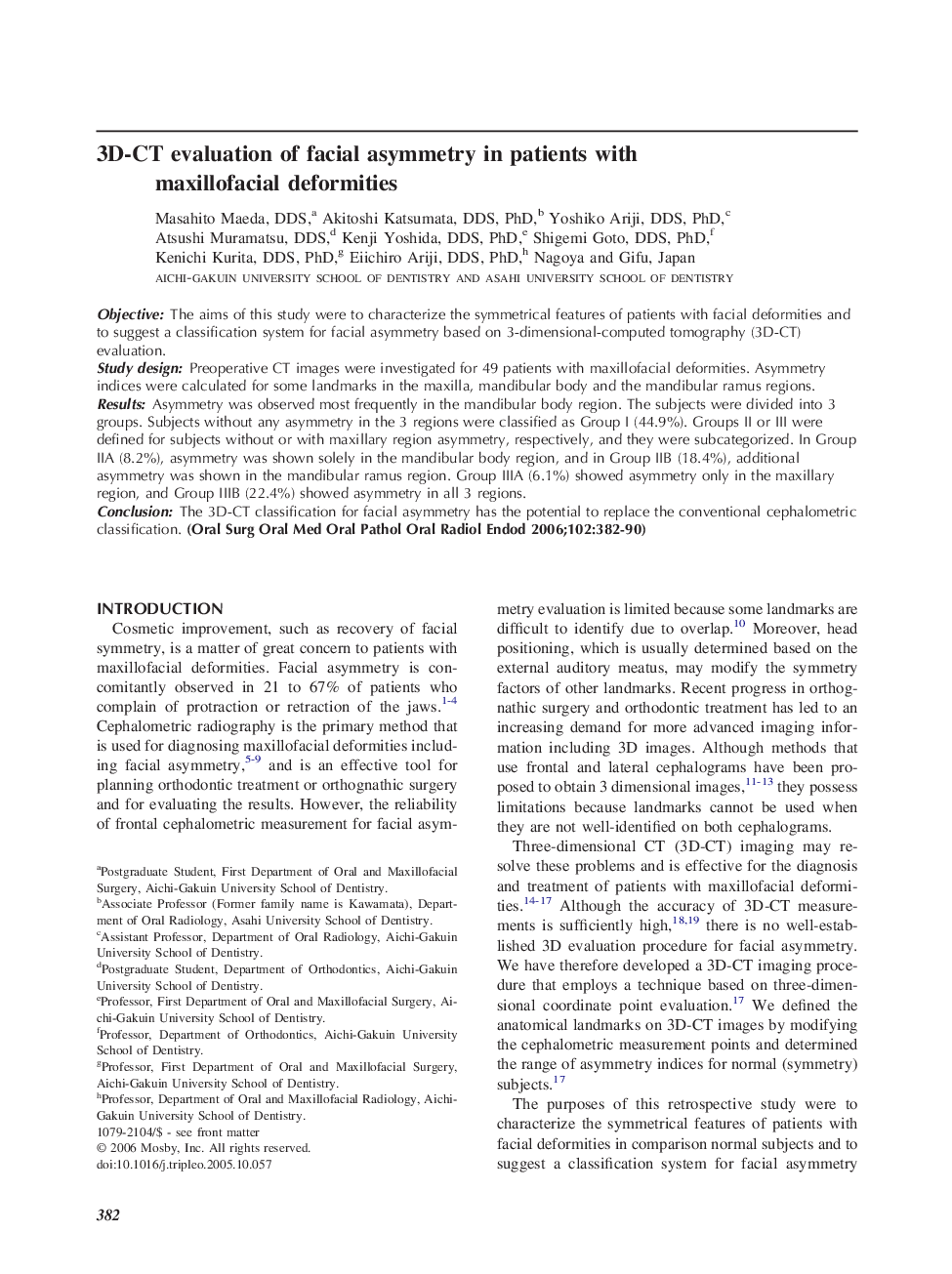| Article ID | Journal | Published Year | Pages | File Type |
|---|---|---|---|---|
| 3169926 | Oral Surgery, Oral Medicine, Oral Pathology, Oral Radiology, and Endodontology | 2006 | 9 Pages |
ObjectiveThe aims of this study were to characterize the symmetrical features of patients with facial deformities and to suggest a classification system for facial asymmetry based on 3-dimensional-computed tomography (3D-CT) evaluation.Study designPreoperative CT images were investigated for 49 patients with maxillofacial deformities. Asymmetry indices were calculated for some landmarks in the maxilla, mandibular body and the mandibular ramus regions.ResultsAsymmetry was observed most frequently in the mandibular body region. The subjects were divided into 3 groups. Subjects without any asymmetry in the 3 regions were classified as Group I (44.9%). Groups II or III were defined for subjects without or with maxillary region asymmetry, respectively, and they were subcategorized. In Group IIA (8.2%), asymmetry was shown solely in the mandibular body region, and in Group IIB (18.4%), additional asymmetry was shown in the mandibular ramus region. Group IIIA (6.1%) showed asymmetry only in the maxillary region, and Group IIIB (22.4%) showed asymmetry in all 3 regions.ConclusionThe 3D-CT classification for facial asymmetry has the potential to replace the conventional cephalometric classification.
